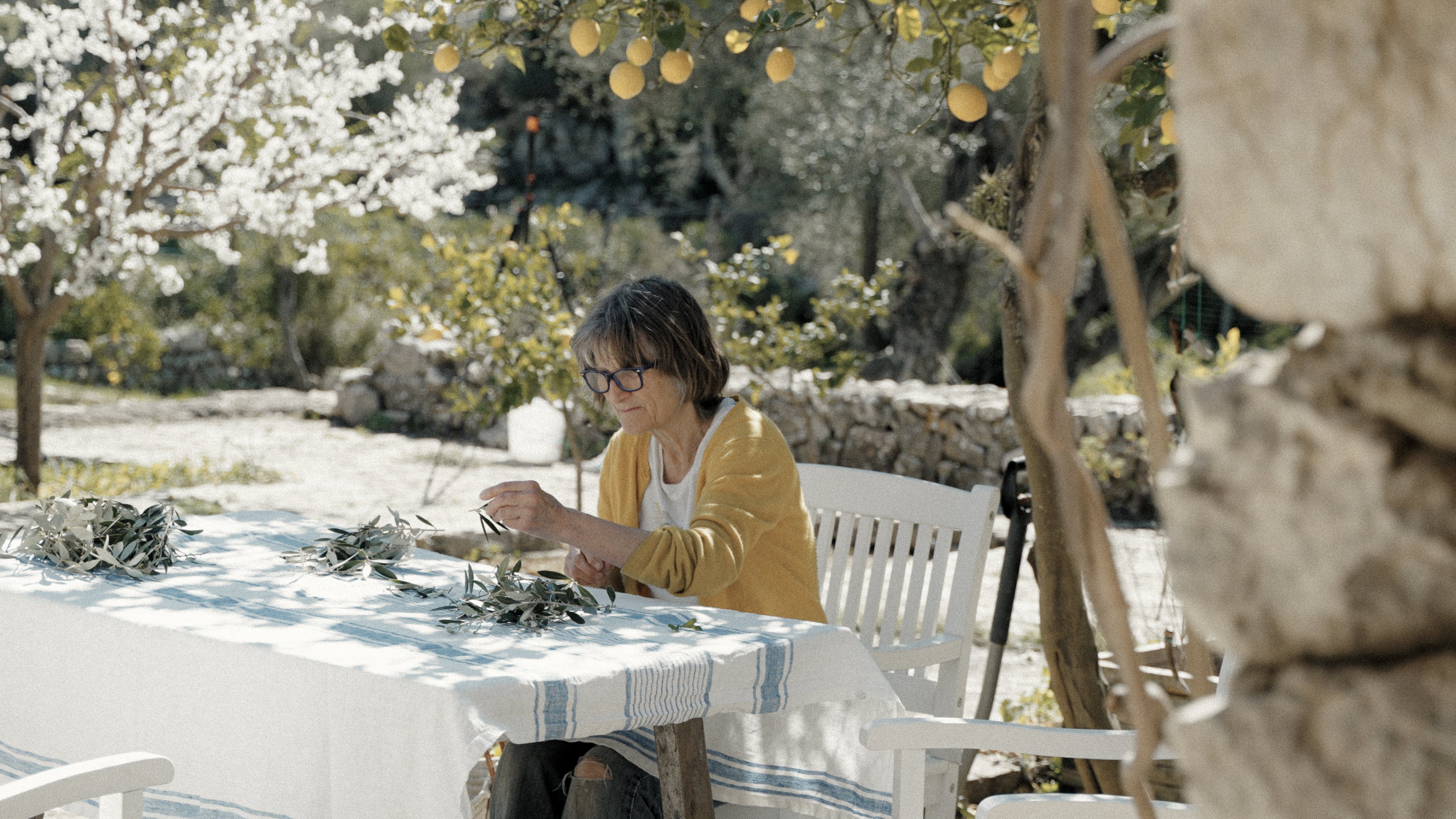
10 tips for more peace in life
Striving for peace and balance in our hectic everyday lives is more than just a trend - it is a vital necessity. However, in the midst of commitments, deadlines and constant digital noise, it is often a challenge to find moments of calm. Yet these are crucial for our wellbeing and mental health. Here are ten simple tips on how to bring more calm into your life.
1. get rid of your perfectionism
Accept that perfection is not desirable. Allow yourself to make mistakes and learn from them.
In a world that often strives for external perfection, it can be challenging to let go of the pressure of perfectionism. But the truth is that no one is perfect, and the pursuit of perfection often does more harm than good. Accept that imperfection is a natural part of being human.
Allow yourself to make mistakes and see them as opportunities to grow and learn. Mistakes are not only human, but also a valuable signpost on the path of personal development. When you free yourself from the burden of perfection, you open the door to creativity, innovation and self-acceptance.
Instead of letting yourself be guided by an unrealistic ideal, focus on getting the best out of every situation. This does not mean that you should lower your standards, but rather that you should set realistic expectations and focus on continuously growing.
Remember that true beauty and strength often lie in imperfections. By shedding perfectionism, you create space for authentic relationships, personal fulfillment and a deeper connection to yourself. Be kind to yourself, allow yourself room to grow and recognize the true beauty that lies in authenticity and individuality .
2. go into nature
Escape the stress of everyday life and consciously spend time in nature. The healing power of nature is an invaluable resource that is often overlooked.
Going for a walk in the forest or strolling along the beach can work wonders to clear your head and recharge your batteries.
Nature offers an escape from the noise of technology, the pressure of deadlines and the constant flood of information. It gives us a moment of silence and allows us to focus on the essentials. The green leaves of the trees, the sound of the sea or the sound of birds can have a meditative effect that calms the mind and refreshes the senses.
A walk in nature also allows us to take our eyes off our own thoughts and appreciate the beauty of the surrounding world instead. It is an opportunity to focus on the here and now and experience the simplicity and serenity of nature.
Nature is not only a physical retreat, but also a source of inspiration. It stimulates creativity, promotes mindfulness and supports emotional well-being. Whether you opt for a short walk in the park or an extended hike in the mountains, nature offers us the opportunity to leave the stresses of everyday life behind and immerse ourselves in a state of calm. Take this opportunity to recharge your batteries, recharge your batteries and discover the beauty of the world around you.
TIP: Our incense bundles can help you to delve deeper into your emotional connection with yourself.

3. try different relaxation techniques
Find out which techniques suit you best. Whether meditation, yoga or breathing exercises - discover your own method.
There are numerous methods that can help you cope with the stress of everyday life. The great thing is that you have the freedom to try out different approaches and choose the ones that best suit your lifestyle and personality.
- Meditation: Sit comfortably, close your eyes and concentrate on your breath. The regular practice of meditation can not only calm the mind, but also promote clarity and mindfulness.
- Yoga: A combination of physical exercises, breath control and meditation, yoga is a holistic method that not only increases flexibility, but also reduces stress and promotes emotional well-being.
- Breathing exercises: Deepen your breathing and use conscious breathing techniques to reduce stress. Breathing in and out deeply can calm the nervous system and have an immediate effect on your well-being.
- Progressive muscle relaxation: By tensing and relaxing different muscle groups in a targeted manner, you can release physical tension and achieve deep relaxation.
- Mindfulness training: Practice conscious mindfulness in the present moment. This can be achieved through simple activities such as conscious eating, taking walks or focusing on the senses.
It is important to emphasize that there is no one-size-fits-all solution. Rather, it's about finding the method that is most effective for you. Experiment with different techniques to find what feels most natural and effective for you. It can also be helpful to get professional guidance or support, be it through courses, apps or books. By taking the time to explore these techniques, you are giving yourself the gift of relaxation and inner peace.
4. make yourself aware of the positive things
Focus on the positive things in your life. Keep a gratitude journal to record positive experiences every day.
It's easy to get overwhelmed by negative thoughts and situations, but consciously focusing your attention on the positive aspects can have a significant impact on your wellbeing.
One effective way to do this is to keep a gratitude journal. This simple ritual only requires a few minutes a day, but can have transformative effects. Consciously take time to reflect on the small joys and positive events that you encounter in your everyday life.
Here are some tips on how to organize your gratitude journal:
Daily entry: Set yourself the goal of recording at least one positive thing every day. This can be anything from an inspiring moment to a kind gesture.
Appreciate diversity: Be open to different sources of gratitude. It doesn't always have to be big events - it's often the little things that have the biggest impact.
Capture emotions: Don't just write down what you are grateful for, but also how it makes you feel. Becoming aware of the emotions reinforces the positive effect.
Review: Occasionally take time to read past entries. This will allow you to recognize and appreciate the positive changes in your life.
Keeping a gratitude diary not only promotes an optimistic mindset, but also has demonstrable effects on mental health. It can reduce stress, boost self-esteem and contribute to a more positive outlook on life overall. By focusing on the positive things, you lay the foundation for an inner peace that is nourished by an optimistic perspective.

5. do sport
Physical activity is a natural stress reliever. Find an activity that you enjoy.
Physical activity is not only good for the body, but also an effective stress reliever for the soul. Whether you opt for an intense training session or a gentler form of exercise, sport has been proven to have positive effects on emotional well-being. Here are some ways you can incorporate exercise into your everyday life:
- Find your passion: choose an activity that you enjoy. Whether it's jogging, swimming, yoga or dancing - the choice is huge. A love of exercise turns regular exercise into an enjoyable habit.
- Train with friends: Sharing sports activities with friends is not only more fun, but also creates a supportive social environment. Laughing and sweating together not only strengthens your physical condition, but also your emotional state.
- Set realistic goals: Define clear, achievable goals. These can be milestones such as improving your endurance or achieving a certain fitness level. Achieving goals boosts self-confidence and motivates you to keep going.
- Make the most of nature: if possible, take your sporting activities outside. A run in the park, a bike ride or a hike in nature are not only good exercises, but also offer fresh air and nature experiences.
- Vary your routine: Avoid monotony by adding variety to your exercise routine. Alternate between strength training, endurance exercises and flexibility exercises to develop your entire body.
The physical benefits of exercise are well known - from strengthening the cardiovascular system to toning the muscles. At the same time, exercise also has a profound effect on mental health by reducing stress hormones and releasing endorphins that increase well-being.
Make sport an integral part of your routine and experience the transformative effect on your overall well-being. Your body and mind will thank you for it.
6. learn to let go
Identify what is weighing you down and develop strategies to let go.
Letting go of things that weigh us down is often easier said than done, but it's an important step on the path to inner peace and emotional freedom. Here are some steps that can help you make the process of letting go easier:
- Self-reflection: Take time for honest self-reflection. Identify which thoughts, emotions or situations are bothering you. A diary can help you to record these insights.
- Acceptance: Accept that there are things that are out of your control. Letting go often begins with accepting the fact that we cannot influence everything.
- Raise your awareness: Become aware of how holding on to certain things or situations is damaging your well-being. Ask yourself whether it is really necessary to hold on to these burdens.
- Accept change: Life is constantly changing. Accept that change is inevitable and recognize the opportunities that can arise from it.
- Learning to let go: Develop techniques to actively let go. This can be meditation, breathing exercises or consciously accepting change. The process of letting go often requires practice and patience.
- Seek support: Talk to friends, family members or a professional counselor about what is bothering you. External perspectives can often help to bring clarity.
- Focus on the here and now: concentrate on the present moment. Often the burden lies in thoughts of the past or worries about the future. Awareness of the moment can pave the way to letting go.
- Forgiveness: Practice forgiveness, both towards others and towards yourself. Forgiveness is a powerful tool to free the mind from negative burdens.
Letting go is an ongoing process that requires self-awareness, patience and acceptance. It does not mean showing weakness, but on the contrary, taking control of your own well-being. By learning to let go, you create space for something new and open the door for positive change in your life.

8. make a conscious decision for serenity
In stressful moments, consciously take a step back and choose serenity.
Consciously taking a step back in stressful moments and choosing serenity is a powerful skill that can strengthen your emotional resilience. Here are some steps to consciously choose serenity:
- Practice mindfulness: Root yourself in the present moment by mindfully noticing what is happening around you. Pay attention to your thoughts and emotions without getting caught up in them.
- Use breathing exercises: Use conscious breathing exercises to center your attention and reduce stress. Deep, slow breaths help to calm the nervous system.
- Change of perspective: Look at the situation from different angles. Ask yourself whether it will still be important in five years' time and whether you have control over it. This can help you to see things in a wider context.
- Use positive affirmations: Use positive affirmations to calm your mind and promote positive energy. Repeat calming phrases such as "I am calm and serene" or "I am in control of my reactions."
- Set priorities: Identify the really important things in a situation and focus on them. Sometimes we can get lost in stress if we focus too much on trivial matters.
- Set boundaries: Allow yourself to set clear boundaries, especially when it comes to taking responsibility for things that are out of your control. Learn to say "no" when you need to.
- Reflect on the past: Think back to moments when you successfully chose calmness. What did you do back then to stay calm? Learn from your own experiences.
- Seek support: If the situation is too overwhelming, seek support from friends, family or colleagues. Sharing thoughts and feelings can have a relieving effect.
Make a conscious decision to cultivate serenity. This requires practice and the development of a positive mindset. By learning to react consciously in stressful moments,

7. find out your triggers
Pay attention to which situations or people trigger stress.
Identifying and understanding your triggers are key components on the path to more inner peace and serenity. Here are steps that can help you recognize your triggers and deal with them constructively:
- Self-observation: Become an observer of your own feelings and reactions. Make a note of situations in which you feel stressed or uncomfortable. This will enable you to recognize patterns.
- Understand emotional reactions: Analyze your emotional reactions to certain situations. Ask yourself why you are stressed, anxious or angry at certain moments. This helps to understand underlying causes.
- Identify specific triggers: Be specific when identifying your triggers. It is not only important to know that you are stressed, but also why you are stressed. Is it certain types of tasks, people or environments?
- Reflect on your past: Sometimes triggers have roots in past experiences. Reflect on whether there are patterns from the past that influence your current reactions.
- Share your findings: Talk openly with trusted friends or family members about your findings. External perspectives can help identify blind spots and develop solutions.
- Develop coping strategies: Once you have identified your triggers, work on constructive coping strategies. These could be breathing exercises, taking short breaks, seeking emotional support or re-evaluating thoughts.
- Set clear boundaries: Sometimes triggers can be avoided or reduced by setting clear personal boundaries. Identify which boundaries are important to you and communicate them clearly.
- Seek professional help: If you find it difficult to deal with your triggers on your own, don't hesitate to seek professional support. A therapist or counselor can help you develop more in-depth solutions.
Consciously dealing with your triggers not only enables you to reduce stress triggers, but also to react better to them. By becoming aware of your triggers and learning how to deal with them, you pave the way to emotional stability and inner serenity.
9. get enough sleep
Restful sleep is crucial for your mental and physical health.
In the hectic pace of modern life, we tend to underestimate the value of sleep. However, adequate and quality sleep is not only important, but crucial for our mental and physical health. It is a phase in which the body regenerates, the mind comes to rest and the foundation for a successful day is laid.
Sleep should not be seen as a sacrifice of activity, but as a vital part of our daily routines. To ensure that sleep delivers its full benefits, it is crucial to give it enough space in our schedule. Prioritize sleep as if it were a precious gift to yourself.
Creating a regular sleep routine is like tuning an instrument - it requires precision and continuity. Go to bed at the same time and get up at the same time to provide your body with an internal clock. This regularity signals that it's time to prepare for sleep.
The environment in which you sleep also plays an important role. A quiet, darkened bedroom with a comfortable temperature promotes undisturbed sleep. Avoid stimulating activities before bedtime and limit screen time to calm the mind.
Restful sleep is not only important for physical recovery, but also for cognitive functions. During sleep, memories are consolidated, the immune system is strengthened and the metabolism is regulated. Sleep is a holistic process that brings body and mind into harmony.
Invest in your well-being by getting enough sleep. Don't see sleep as a waste of time, but as a necessary investment in your health. Not only will you wake up refreshed and invigorated, you will also be ready to face the challenges of the new day with clarity and energy.
10. reflect on yourself
Consciously take time to think about your feelings and thoughts.
Self-reflection is a powerful tool for developing a deeper understanding of yourself and promoting personal growth. In the midst of our often hectic daily lives, it can be easy to get carried away by the demands of the outside world and lose touch with our own needs and emotions. The conscious practice of self-reflection allows us to pause, question ourselves and take a clear look at our inner selves.
The journey of self-reflection begins with consciously taking time for it. It means distancing yourself from external distractions and creating a space of silence. This can be a quiet place in nature, a cozy reading chair or simply a few minutes of silence in a closed room. In this moment of peace and mindfulness, thoughts become clearer and feelings more perceptible.
During this process, it is important to observe without judgment. Just let the thoughts and emotions flow without getting caught up in blame or self-criticism. Self-reflection is not a rating system, but an opportunity to objectively observe your inner self. Ask yourself why you feel the way you do in certain situations, what thoughts occupy your mind and how you react to different stimuli.
Self-reflection can be encouraged through various methods, be it by keeping a diary, writing down thoughts, meditation or sharing with trusted people. This process makes it possible to recognize patterns that affect recurring themes and challenges in our lives. Over time, a deeper self-knowledge develops, which serves as a basis for more conscious decisions and better emotional regulation .
By consciously taking time for self-reflection, you lay the foundation for personal growth and inner balance. You not only recognize who you are at this moment, but also who you want to become. This process of self-discovery is not static, but continuous, and opens up opportunities for a deeper connection with yourself and others.
These ten tips are easy to integrate into everyday life and can make a significant difference to your inner balance.
Find ways to adapt and implement this advice for yourself. Take conscious breaks to discover the beauty of rest and connect with your inner balance.
